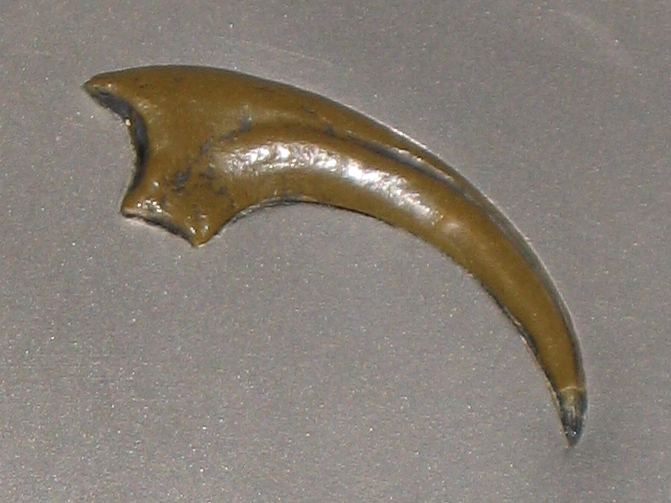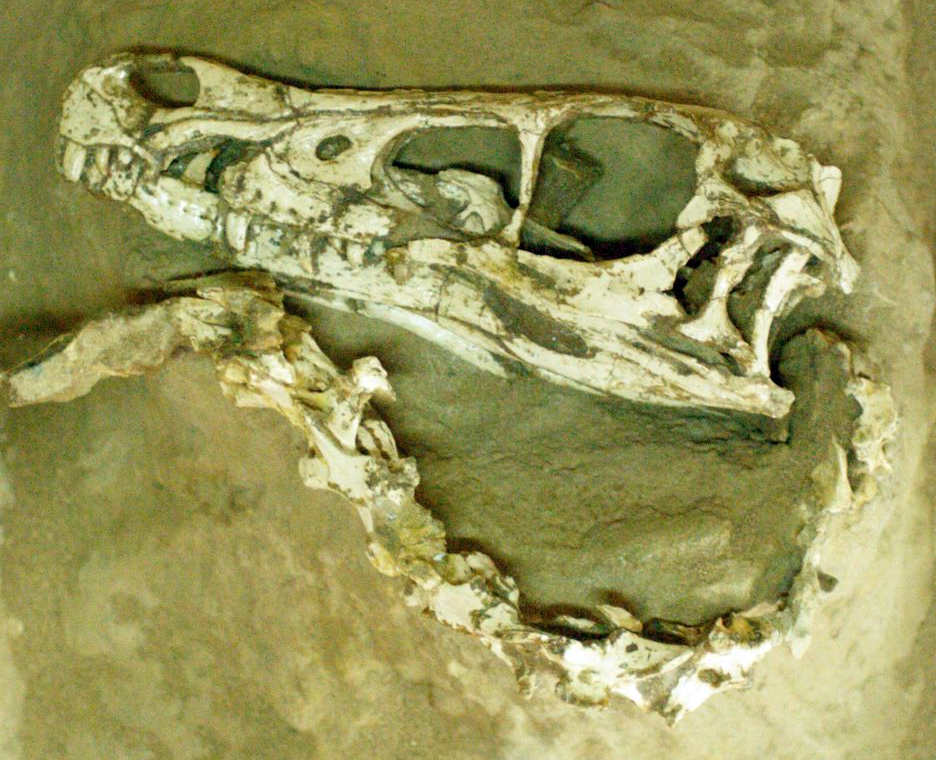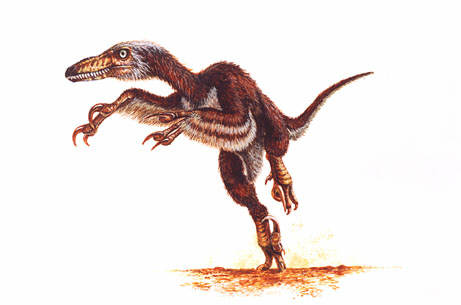Form and Function
Velociraptor
mongoliensis was a small non-avian,
feathered theropod dinosaur that grew to be about 24 kilograms, or
roughly the size of a wild turkey. As eluded to on our homepage,
V. mongoliensis was a dinosaur of disproportionate characteristics that
helped make it an efficient and devastating predator. Its “killer”
claws and other skeletal features made for one terrifying dinosaur.
The “Killer” Claws
Velociraptor mongoliensis possessed three sickle claws. The
abnormally large middle claw could be extended and rotated 180
degrees at the theropod’s will. There are multiple ideas about the
functionality of these claws. The original hypothesis is that the
claws were used for disemboweling prey, however, currently there are
many paleontologists that disagree with this idea. For example,
Fowler et. al from the Museum of the Rockies and Department of Earth
Sciences point out that there are several living species of birds
and non-avian reptiles that possess
Skeletal Features
Velociraptor mongoliensis had a longitudinal ridge dorsal to a row of
neurovascular foramina in the maxilla of the skull. The skull
 had a
concave upper surface and convex lower surface which created long,
slender, upturned snout. These characteristics make
V. mongoliensis
easy to identify from other Dromaeosaurs that otherwise look similar
in skull structure. Like other Dromaeosaurs,
V. mongoliensis had a
mouth full of sharp, backwardly-serrated teeth that were great for
tearing through the flesh of its prey. Its skull was attached to a
large S-shaped neck and spine which continued into a long, stiff
tail which was disproportionate to rest of the dinosaur’s body
length (Hone et al. 2012). The long tail length was advantageous
for this predatory dinosaur in that V. mongoliensis could use it
like a rudder for steering and balance while chasing prey, much like
the modern day cheetah (http://bioweb.uwlax.edu/bio203/s2007/marek_davi/).
(Hone et al. 2012, Public Broadcasting Station. 2014).
had a
concave upper surface and convex lower surface which created long,
slender, upturned snout. These characteristics make
V. mongoliensis
easy to identify from other Dromaeosaurs that otherwise look similar
in skull structure. Like other Dromaeosaurs,
V. mongoliensis had a
mouth full of sharp, backwardly-serrated teeth that were great for
tearing through the flesh of its prey. Its skull was attached to a
large S-shaped neck and spine which continued into a long, stiff
tail which was disproportionate to rest of the dinosaur’s body
length (Hone et al. 2012). The long tail length was advantageous
for this predatory dinosaur in that V. mongoliensis could use it
like a rudder for steering and balance while chasing prey, much like
the modern day cheetah (http://bioweb.uwlax.edu/bio203/s2007/marek_davi/).
(Hone et al. 2012, Public Broadcasting Station. 2014).
Here is a video showing this mechanisim in action.
Velociraptor mongoliensis had a pelvis with a characteristic pubis that
pointed downward and forward at an angle toward the ischium. The
acetabulum of V. mongoliensis
opened dorsolaterally, indicating that it could abduct and adduct its hind limbs. This
morphological characteristic demonstrates that the ancestors of
V. mongoliensis were probably capable of flight and therefore the
flightlessness of Velociraptor was secondarily lost (Longrich and
Currie. 2009).
Feathers are modified scales, so it should come as no surprise that
some dinosaurs were feathered. Evidence for this is supported by
the quill knobs found on the posterior forearm of
V. mongoliensis
indicate that the dinosaur was feathered. While
V. mongoliensis
certainly did not make use of its feathers for flight, it is
hypothesized that the small theropod used its plumage as a means of
display to attract mates and to cover its nest to protect its eggs.
It is also possible that V. mongoliensis used it’s feathered arms
while running uphill to create a negative lift, accelerating their
bodies upwards and forwards allowing for a faster paced run up
inclines (Turner et. al. 2007). In combination, all of these
characteristics made V. mongoliensis a very efficient and lethal
predator.
For reproductive information on Velociraptor, have a chat with Dr.
Eric Snively or see our page!
